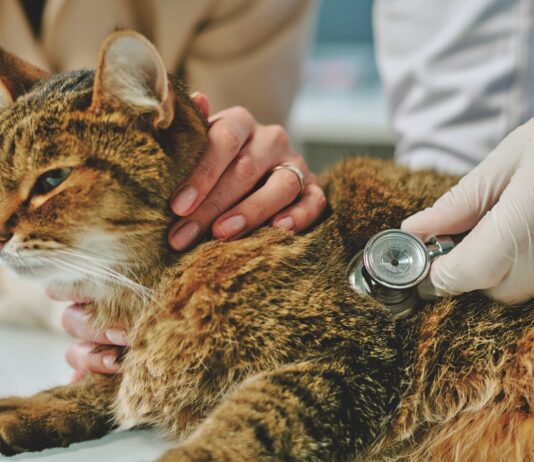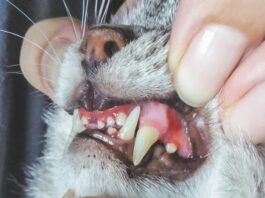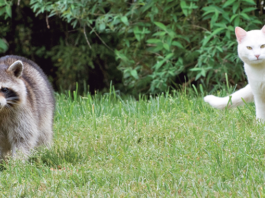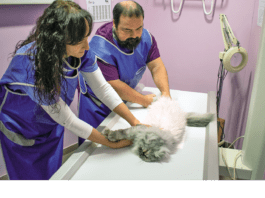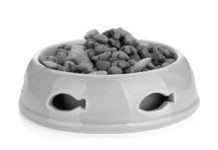Indoor Cats Arent Safe From This Bacteria
If your cat is contending with a kidney ailment, testing his hunting skills outdoors or co-existing with dogs who like hiking in the woods in the home, he may be at risk for a rare but serious bacterial infection known as leptospirosis.
Ask Elizabeth: April 2015
I recently fostered a rescue dog I was told had eaten the feces of a feral cat while being housed in another foster home. This cat subsequently had his stool tested, and it came back positive for toxoplasma gondii. The dog unfortunately defecated in my car while I was transporting him and I am concerned that I may have been exposed to toxoplasma while cleaning up the mess in my car. Do I need to worry about this?
Short Takes: March 2015
A new test for chronic kidney disease in cats has identified its onset an average of 17 months earlier than existing methods, according to a small study published in the Veterinary Journal. Researchers at Oregon State University and IDEXX Laboratory developed a biomarker - a substance indicating disease called SDMA - and used it in a controlled study of 32 older but otherwise healthy cats. When available commercially, a test based on the biomarker could alert cat owners and veterinarians to kidney disease through periodic checkups, researchers say.Chronic kidney disease is common in geriatric cats and often causes their death, says researcher Jean Hall, DVM, Ph.D., at Oregon State. Damage from it is irreversible, but this is an important advance, in that we should be able to identify the problem earlier and use special diets to slow the disease.
Techniques and Treatments From Stem Cell Therapy to Massage
These are among the treatments that veterinarians increasingly use to improve cats well-being:
In The News: February 2015
By far the most common heart disease in cats is hypertrophic cardiomyopathy (HCM). The characteristic thickening of the muscle of the left ventricle seen with HCM affects the hearts ability to pump blood. One complication is that blood clots form and dislodge from the heart and block blood flow in large arteries. The clots cause pain, nerve and muscle damage, and can lead to death. Treatment today is only minimally effective.A study led by Fern Tablin, VMD, Ph.D., at UC Davis will analyze the activation of blood platelets - cells that help blood clot - in cats with HCM with the goal of early detection of the disease. Many affected cats show no signs. Others have labored or rapid breathing and lethargy.
Life-Saving Screening for Hemophilia
Advances in veterinary medicine and an increase in animal blood banks have improved the diagnosis and treatment of hemophilia to the extent that some cats who once would have died from the life-threatening disorder can now live full lives.
Ask Elizabeth: January 2015
My 12-year-old cat has hyperthyroidism. She cannot tolerate methimazole, and I have tried special food (she didnt like it), homeopathic treatments, dietary additives and even consulted an animal psychic. Nothing has an effect, and I dont want to put her through surgery or radioactive iodine therapy. They both sound horrible and also too expensive. Have we run out of options?
Theyre Giving Kittens a Chance at Life
Of all the animals in shelters, young kittens are usually the most at risk. Theyre fragile, prone to infectious illnesses and have special care needs. While some are placed in foster homes to be hand-raised until they are old enough for adoption, many shelters euthanize them as soon as they are brought in because they dont have the infrastructure or staff to care for them.
Reducing the Risk of Food-borne Illness
Demystifying the ingredients in commercial food is only one step in providing a healthy diet for our cats. The ongoing challenge is preventing the spread of food-borne illness to animals and people in the household. At last count, manufacturers had recalled five of six dog and cat foods this year because of possible contamination with the bacteria salmonella. The sixth recalled food was suspected of containing the bacteria Listeria monocytogenes that can also cause serious infection in humans and animals.
Ask Elizabeth: November 2014
Q. Our year-old male cat, found at a county animal shelter seven months ago, has been diagnosed with eosinophilic granuloma complex (EGC). His symptoms are incessant scratching, puffy gums, blistering mouth, swollen front paw, lameness, limping. Our veterinarian has prescribed steroids for him, and these have been somewhat helpful, but can you explain this disease so that we can better understand what is going on? …
Short Takes: November 2014
Estimates are that osteoarthritis affects 90 percent of cats over the age of 12 years. Confirmation of the disease, however, can sometimes prove elusive. In the search for an accurate diagnosis, the Winn Feline Foundation has awarded a grant, funded by the animal health company Zoetis, to researchers at the University of Melbourne. Their goal is to develop a blood test biomarker - a molecule indicating an abnormal process - so the disease can be identified earlier.
Most Cases of Deafness Are Acquired
If your cat has become unresponsive to everyday sounds, squeaky toys or his name, if he doesnt know youre in the room unless you touch him, or if a loud noise fails to awaken him, a veterinary visit should be scheduled to determine if hes losing his hearing. Hearing is a vital sense for cats and greatly contributes to their self-preservation and comfort with us. Deafness in cats can be caused by a wide variety of conditions.

